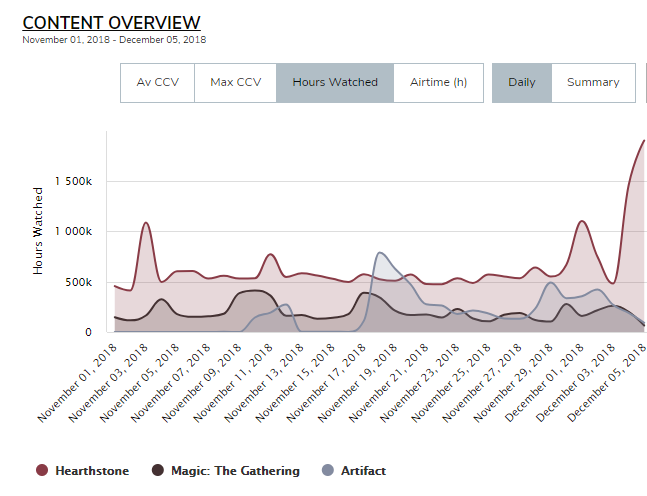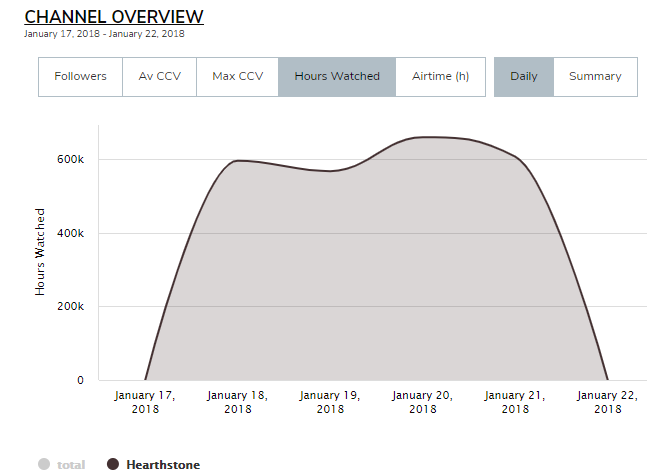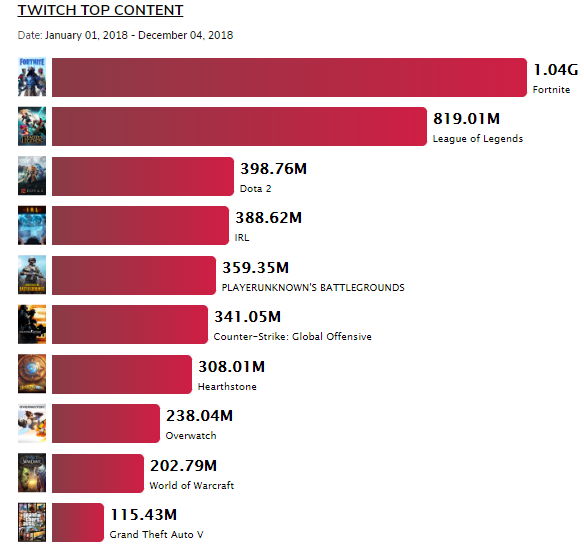
Blizzard Entertainment’s Hearthstone has long stood alone as the dominating force in the card game segment of esports, but as the year comes to a close, a new challenger approaches: Artifact.
Valve’s recently released card game is based on the Dota 2 universe, much in the way that Hearthstone is Warcraft-based, and notably includes the ability to sell and trade collectible cards, something Hearthstone doesn’t allow.
Despite Hearthstone being free-to-play, players must make in-game purchases of cards in order to keep up competitively with no opportunity to exchange cards that are purchased directly from Blizzard. Though Artifact requires a $20 purchase, the ability to trade cards purchased in a pack has obvious appeal to people who don’t want to be subjected to the randomness involved in buying packs of cards.
As the game looks to burst onto the scene as possibly Hearthstone’s biggest esports competitor to date, viewership on Twitch could potentially serve as a metric for gauging success and predicting the future of the card game, as well as its competitors.

Artifact was only officially released last week, but the game has left an immediate mark on the card game space with 5.07M hours watched in November. Magic: The Gathering accumulated 6.12M, and Hearthstone had 16.99M. However, Artifact’s established competitors had the entire month to build those figures.
Though these average viewership numbers aren’t even comparable to games like League of Legends or Fortnite, once competitive play gets involved the numbers start to change. The two most successful days of viewership in card games on Twitch in 2018 were by Hearthstone on April 9 and January 21. Those two days were the only ones this year in which a stream had a session boasting a peak CCV number higher than 100K.

It’s no coincidence that both of those sessions were on the playhearthstone channel. The most successful Hearthstone stream of the year, which posted an average CCV of 94.57K with max of 150.05K, came during the Hearthstone World Championship. The second-highest peak CCV of the year was April 9’s 1.6-hour broadcast which averaged 115.89K CCV for the conclusion of the Copa America 2018 Autumn tournament in Sao Paulo.
While card games typically don’t manage to consistently pull strong viewership numbers from a wide array of influencers that would make the title a piece of top 10 content, fans of these games tune in when it’s time for competition. Despite Hearthstone lacking impressive viewership figures outside of a handful of Twitch influencers, it’s esports viewership makes the title one of the most-watched on the platform.

Though many titles see their best days of Twitch viewership right after they’re released and are freshly embedded in the minds of gamers, it might be worth taking a more patient approach to judging a title like Artifact. Viewership for these types of titles needs to be judged on a different scale.
The viewership of many traditional games is a product of the way its entertainment value compliments the Twitch personalities who decide to play the game. However, collectible card game viewership is significantly more influenced by the competitive atmosphere that large-scale tournaments provide.
Earlier this year, before Artifact was even out of closed beta, Valve said that it planned to hold a tournament in 2019 with a $1M prize pool. While no further details have been released yet, it might be worth waiting on Artifact to develop as an esport before beginning to compare it to an established title like Hearthstone.
All it takes is a quick peak at Valve’s other esports titles, Counter-Strike:Global Offensive and Dota 2, to see the potential. Though each game currently lacks high-profile, top-10 Twitch personalities, they consistently manage to attract some of the highest viewership numbers in esports during their largest events.
Source: esportsobserver.com









Last Opinions